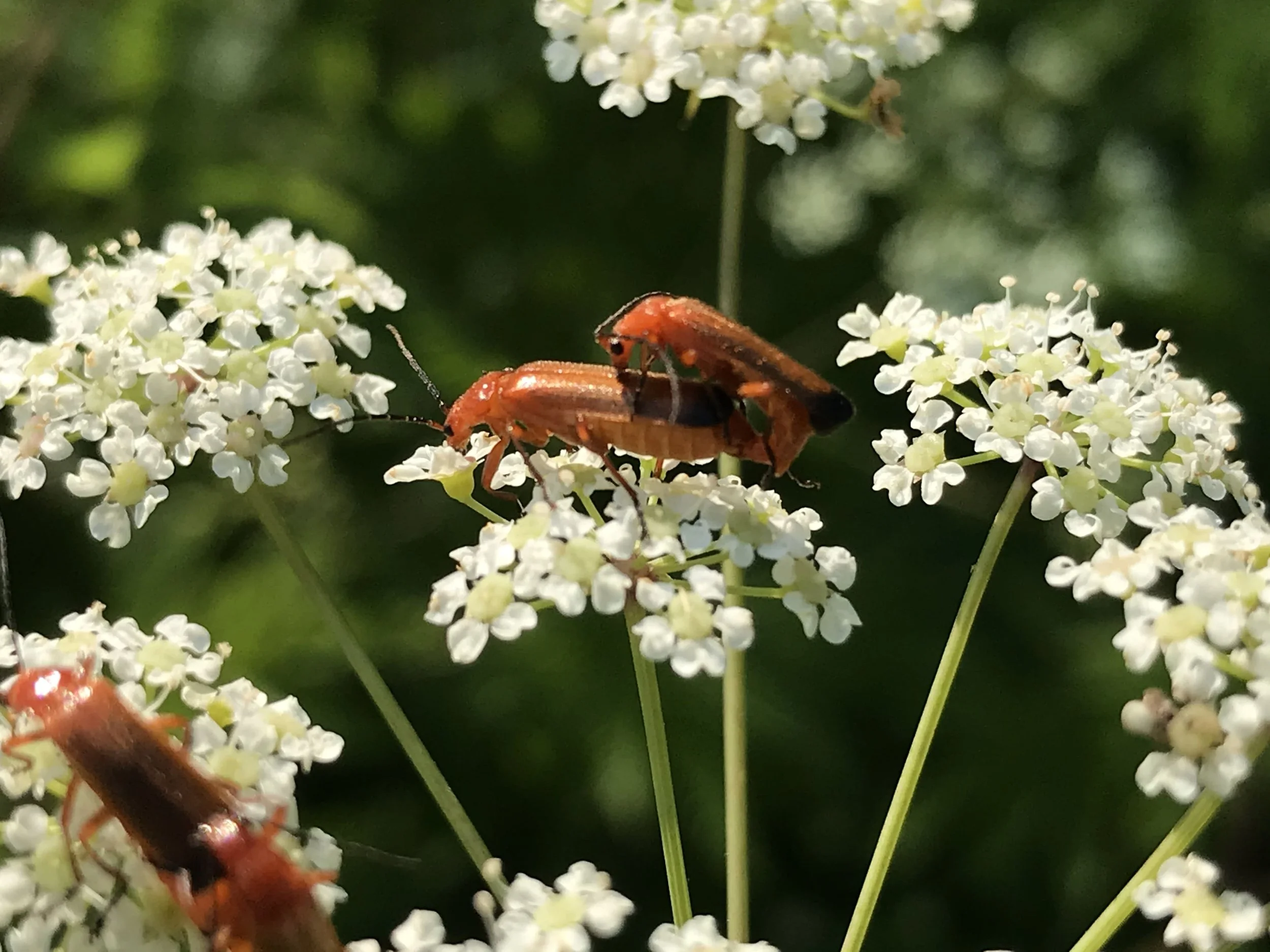Exploring Water Hemlock
I have had a long curiosity regarding Water Hemlock (Cicuta maculata) ever since I had heard of them. Perhaps the most toxic plant on Turtle Island/North America. Of course I would be enamoured! I misidentified them for a couple of years thinking I knew who they were, but it wasn’t until the past four or five years that I began taking a closer look, seeking them out, learning the lore, and reading the sometimes sparse literature on the plant. This post was an effort to collect my thoughts and learning, along with a couple of good photographs to assist with proper i.d..
Water Hemlock is in the Apiaceae family, or the Carrot family, which contains about 300 genera and 3,000 species from around the world. Some of the most widely known plants in the family are plants we use for food such as Carrots (Daucus carota subsp. sativus), Cilantro/Coriander (Coriandrum sativum), Dill (Anethum graveolens), Celery (Apium graveolens), Anise (Pimpinella anisum), Angelica (Angelica spp.), and so many more. The Carrot family is also known for plants which can harm humans such as Giant Hogweed (Heracleum mantegazzianum), Poison Hemlock (Conium maculatum) and other species in the Cicuta genus. They are known for their compound umbel flowers that often look similar to an umbrella which has been turned inside out by a strong gust of wind.
All members of the Cicuta genus are incredibly toxic. They are understood as some of the most deadly plants on the continent, and often mistook for one of their edible cousins.
Description
Habitat and Range : Found in damp ground and wet places; Swamps, low meadows, riversides, road side ditches, wet woodland edges. From Nova Scotia to Alaska, South to Mexico. Common across the continent. Native.
Size and Form : Upright herbaceous perennial, 60 - 225 cm tall, with rigid stalks originating in a thick base. Stalk smooth and green or spotted to solidly purple depending on sun exposure. Chambered at base.
Leaves : Alternately branched, pinnately divided 2-3 times, coarsely toothed lanceolate leaflets. 3- 10 cm (1⅛ - 4 in) long. Veins running along the length of the leaf, and run to the base of the V in between the teeth.
Flower : White flowers, ~35 mm across, with 5 petals, 5 sepals, and 5 stamens. Clustered in umbels 5 - 10 cm (2 - 4 in) across. Flowering usually between early July - August.
Fruit and seed : Fruit remind me of a fancy lute, broadly oval overall, flat on one side, and striped in dark brown against a pale woody beigey-brown. 2 - 4 mm wide. Fruit (schizocarp) ripe around early August - September. Splits into two parts, each part containing a single seed.
Roots : White, with multiple large tuberous rootlets (I have seen up to 10), like a bunch of pale Carrots. Smell similar to Carrot. Exude yellow oil when damaged or broken. Roots possibly the most toxic part of the plant.
Scent : Smells like Carrot or Parsnip, especially when plant tissues are broken or torn.
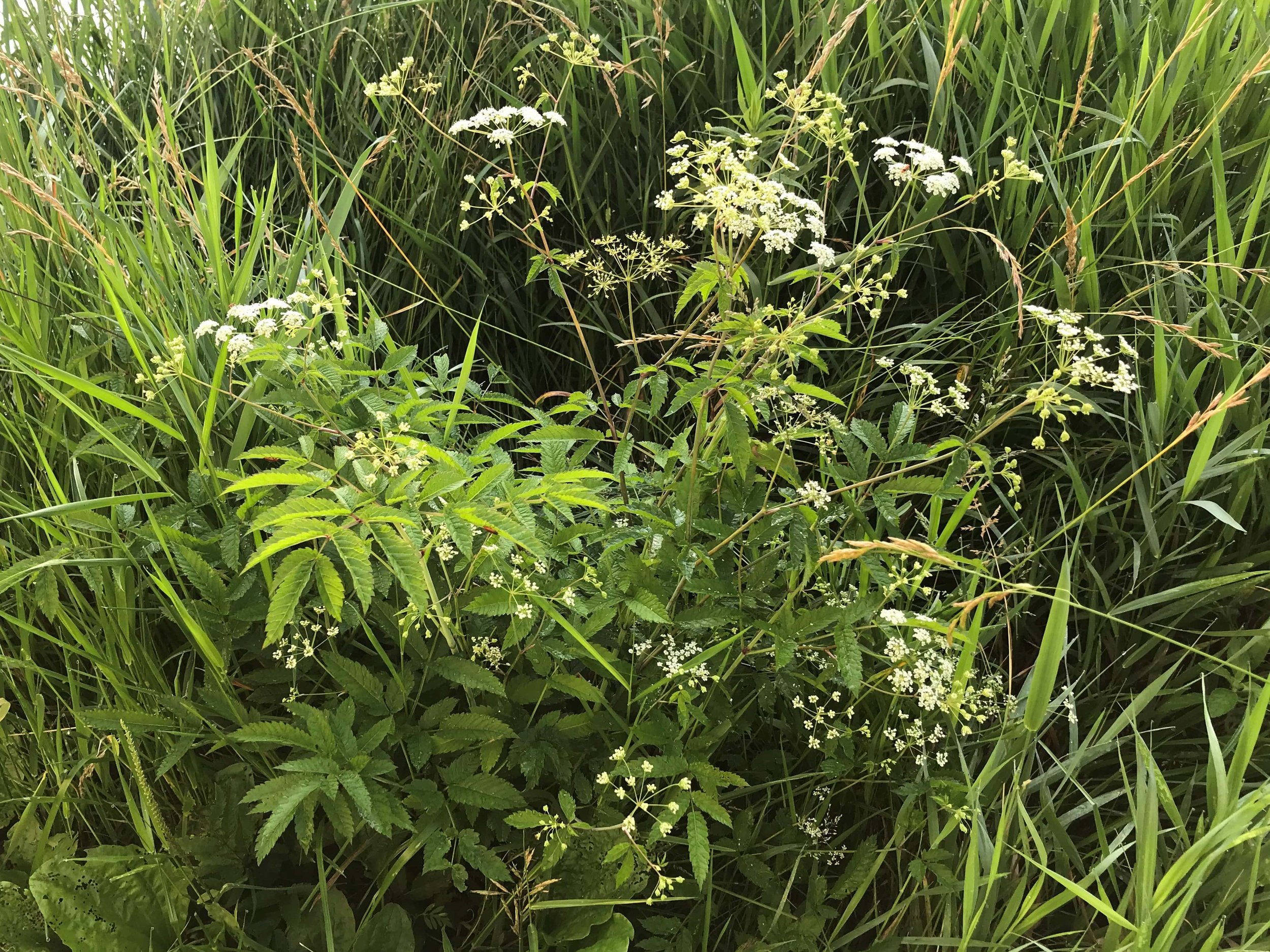

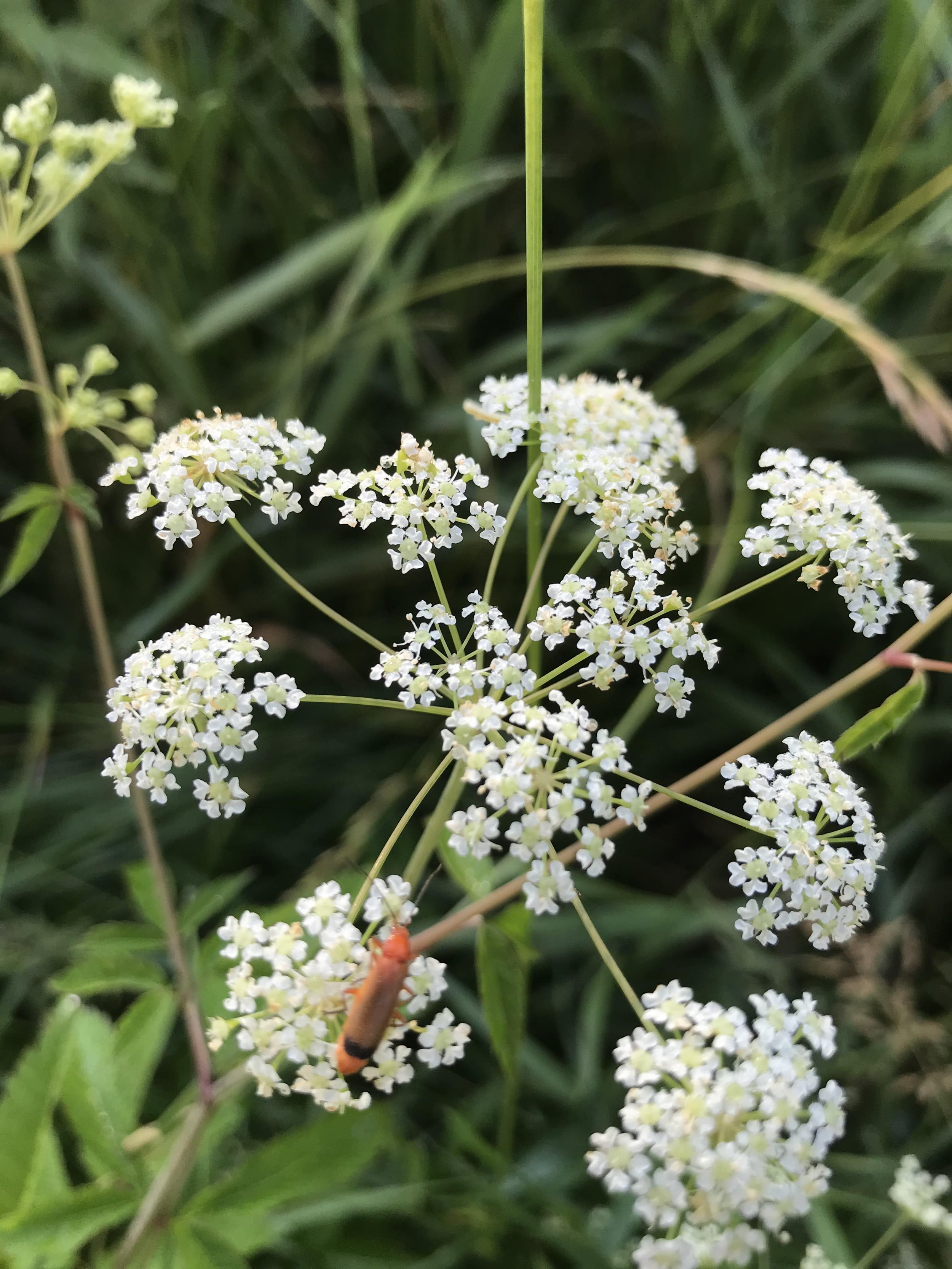
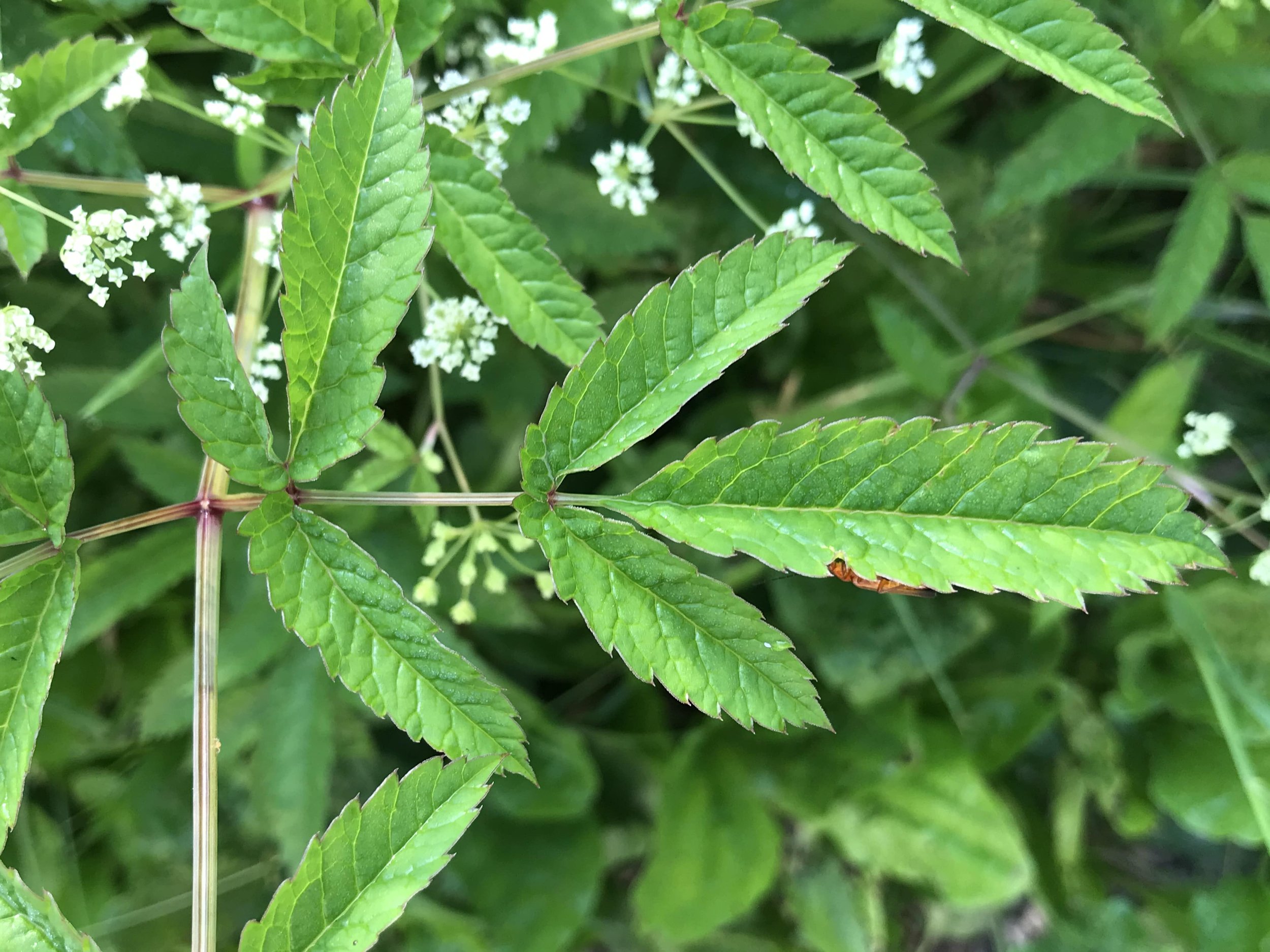
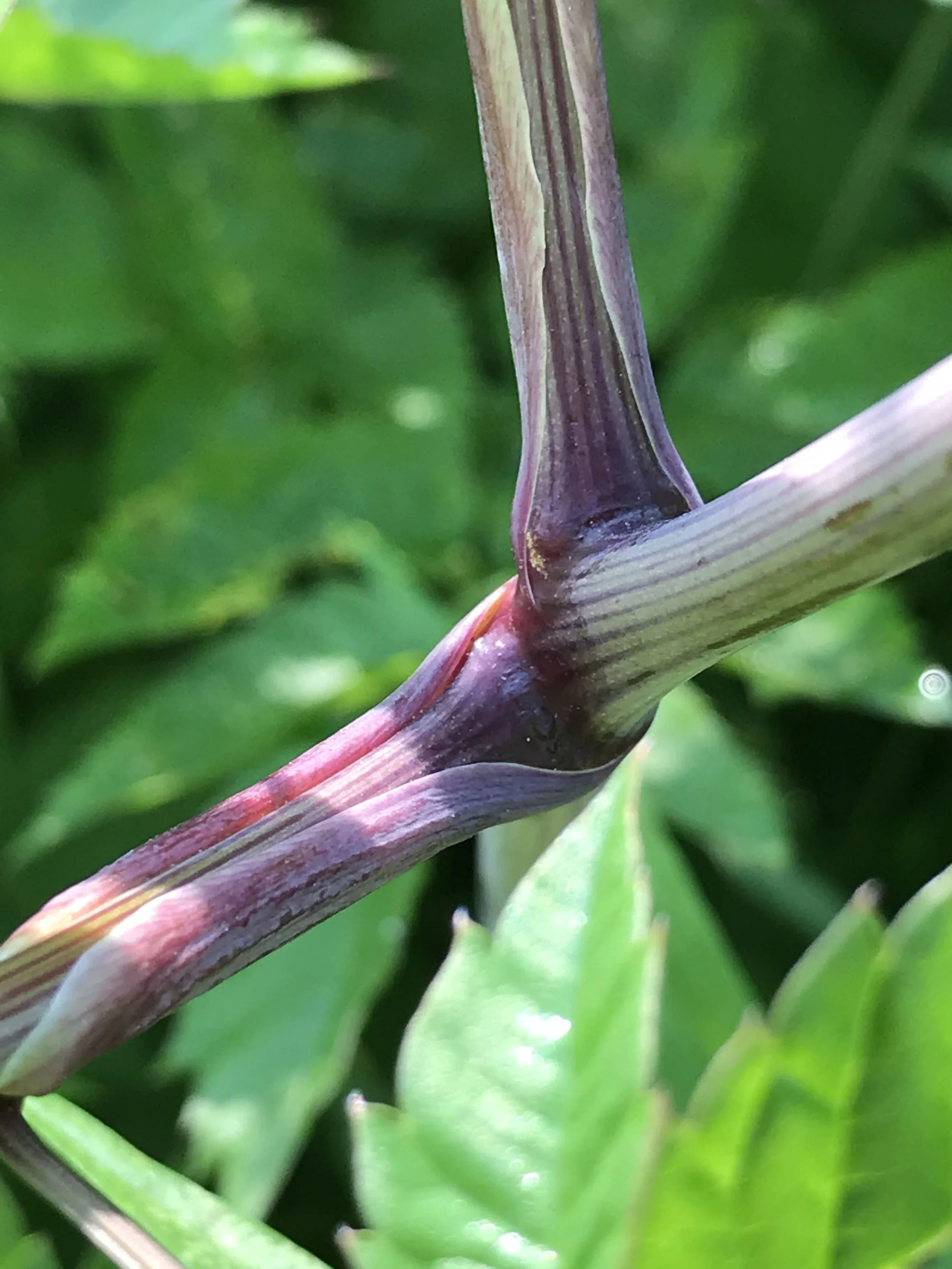
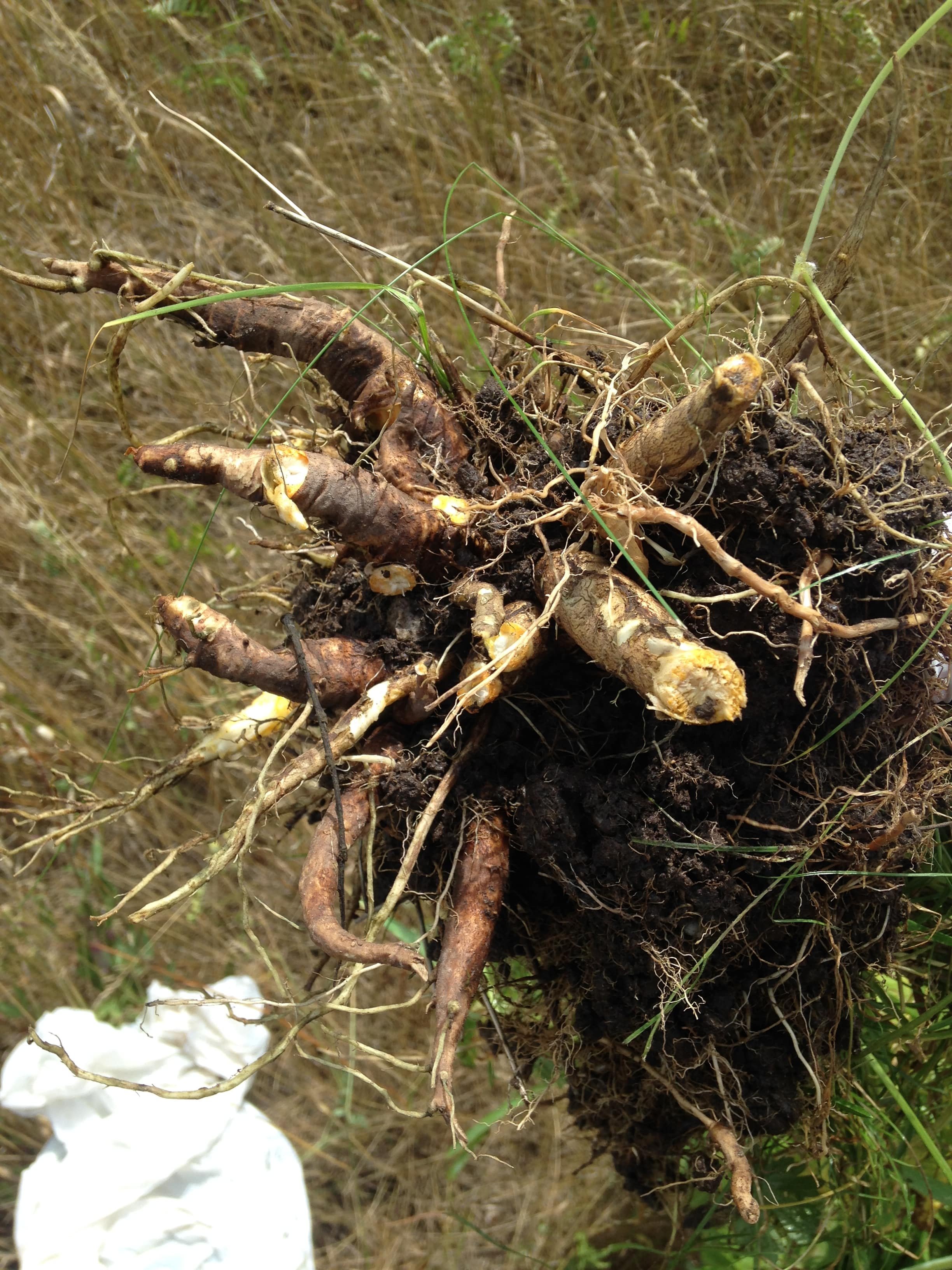

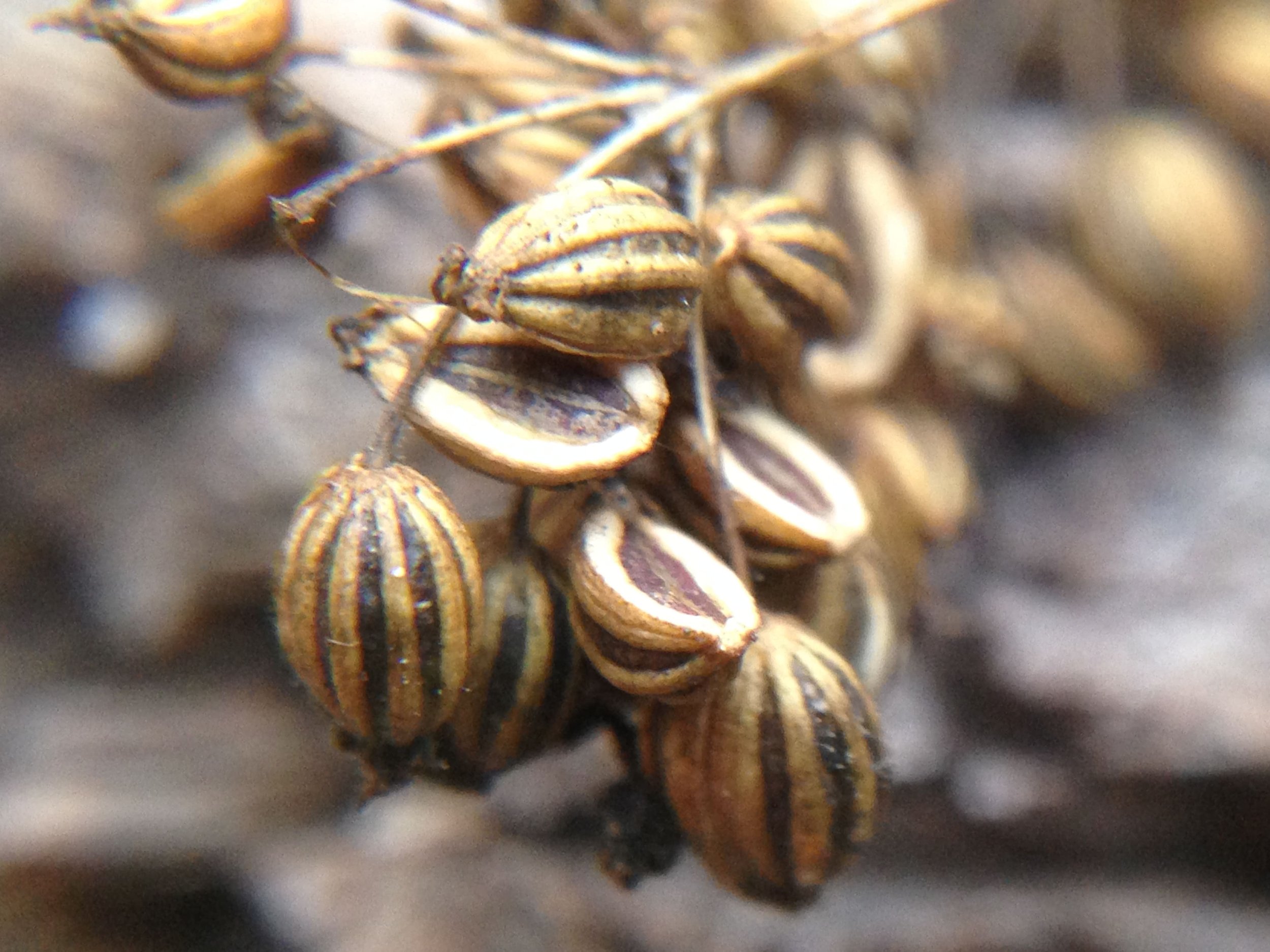
Similar species :

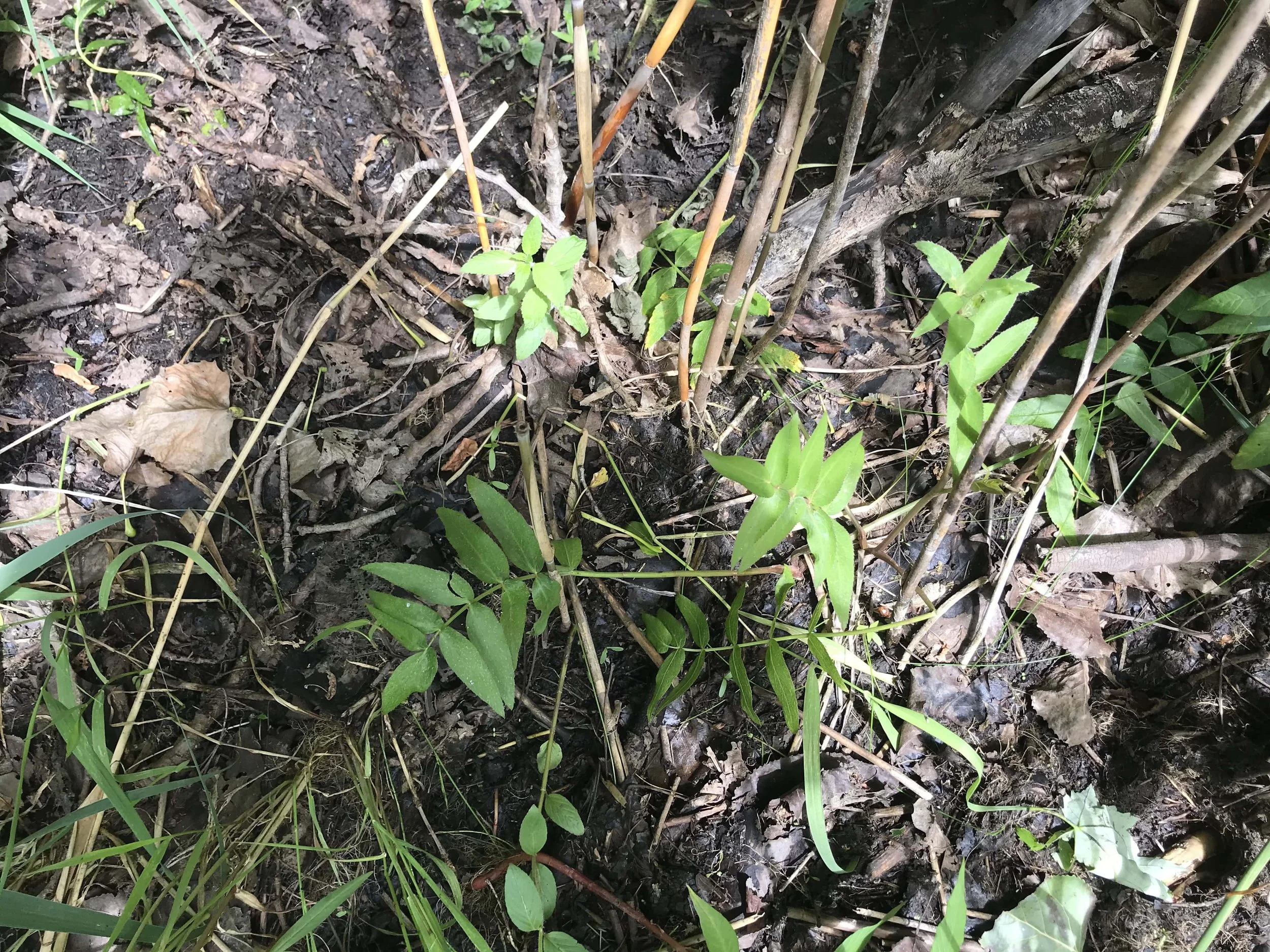
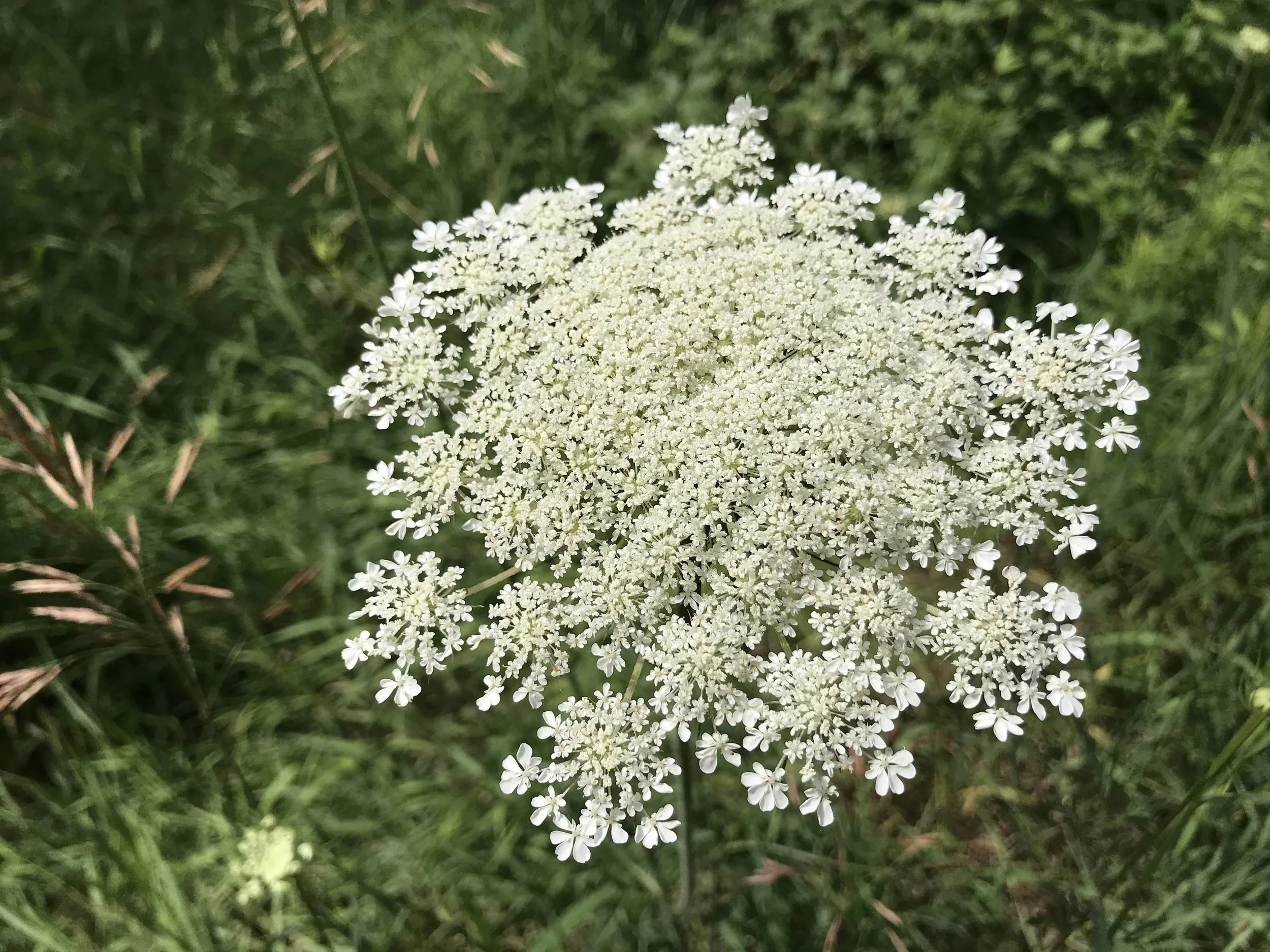
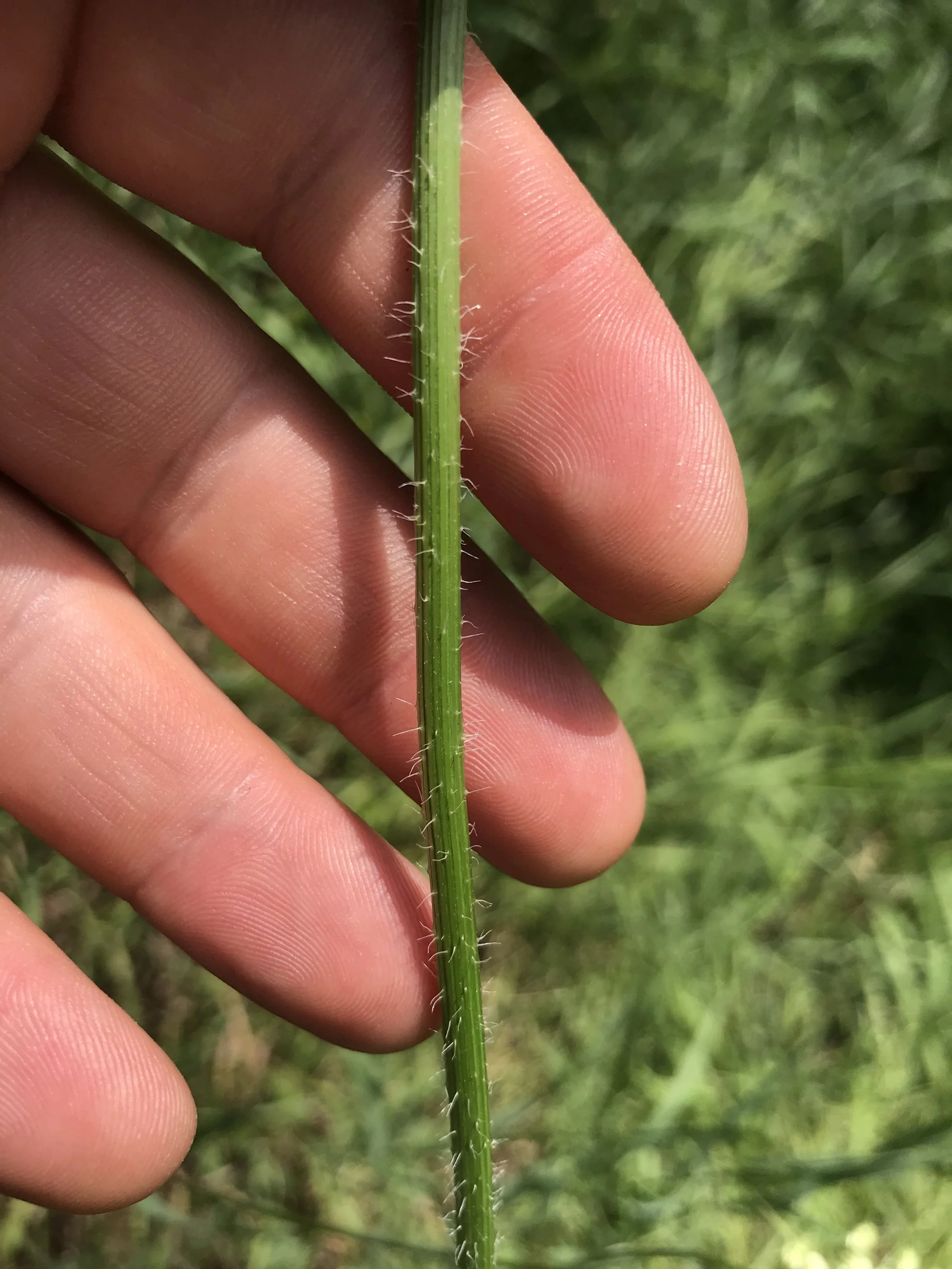
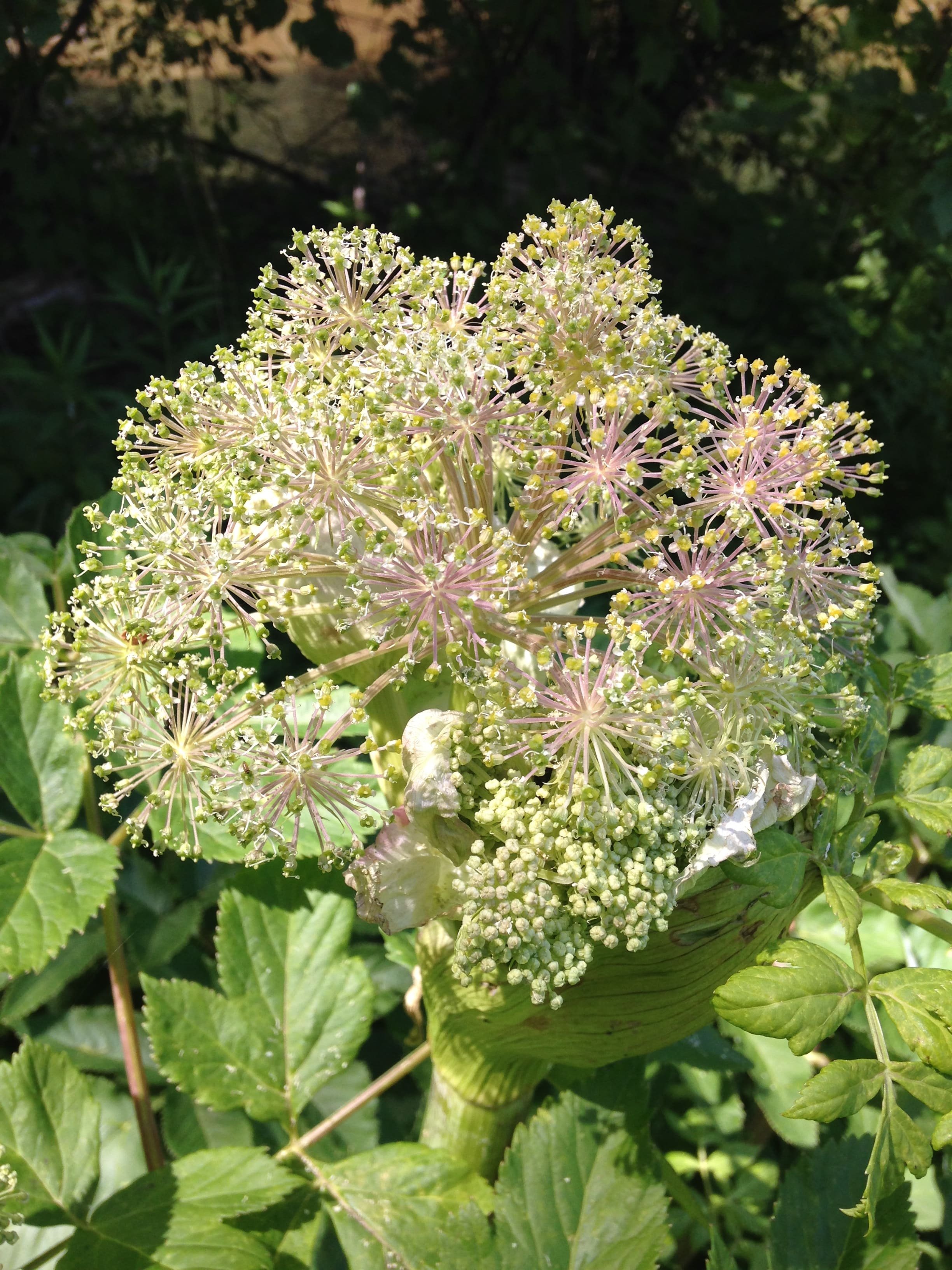
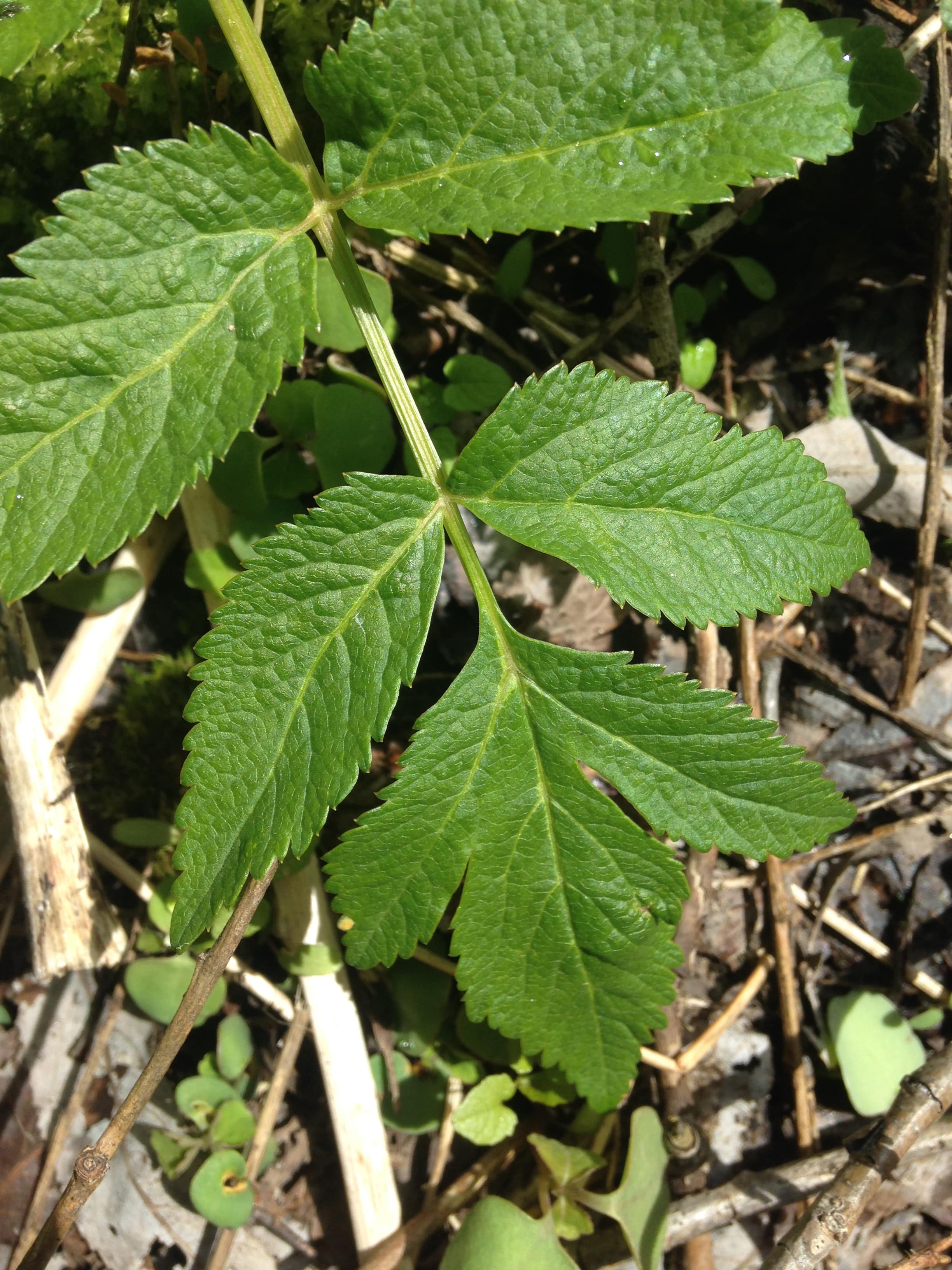
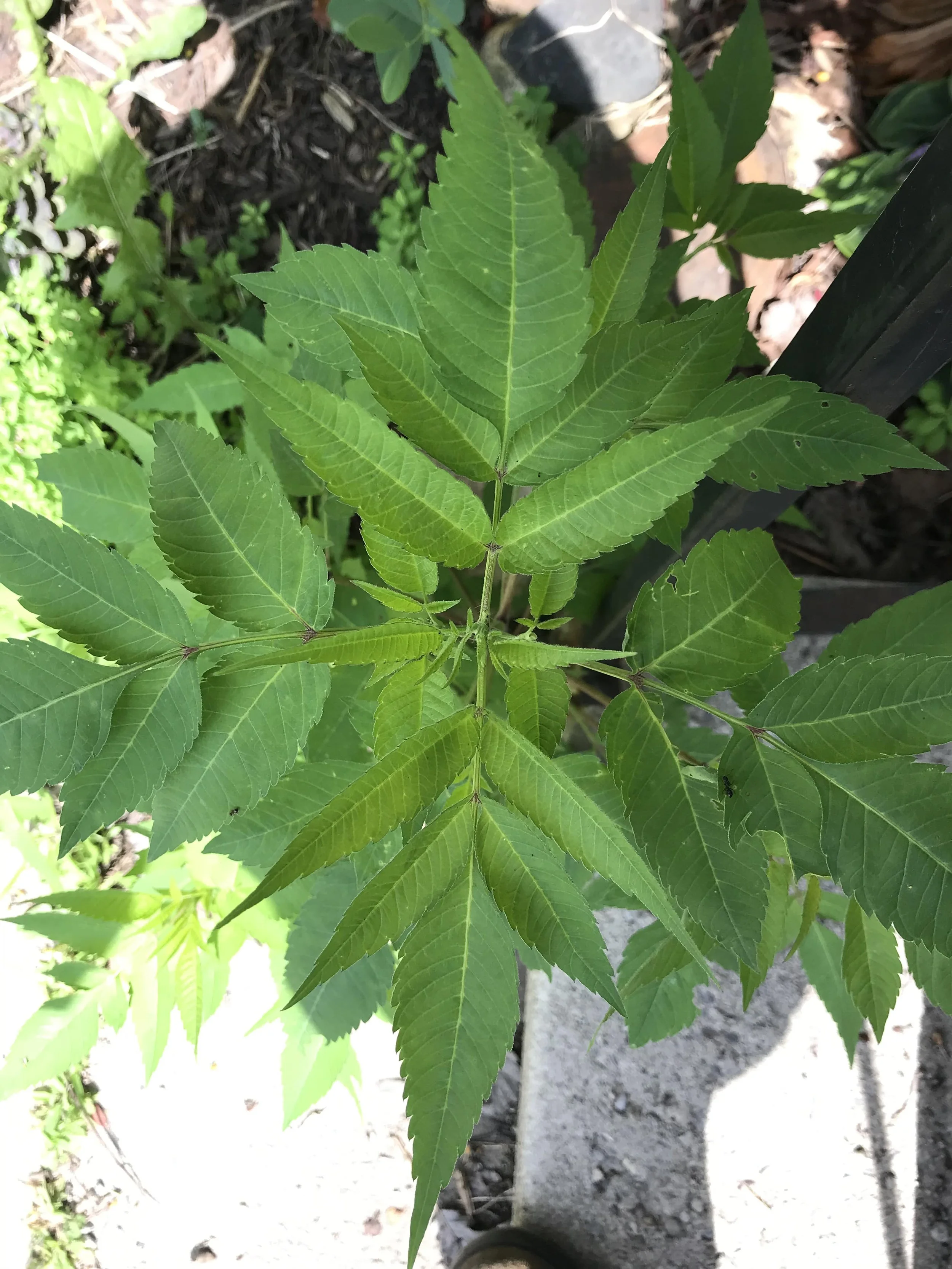
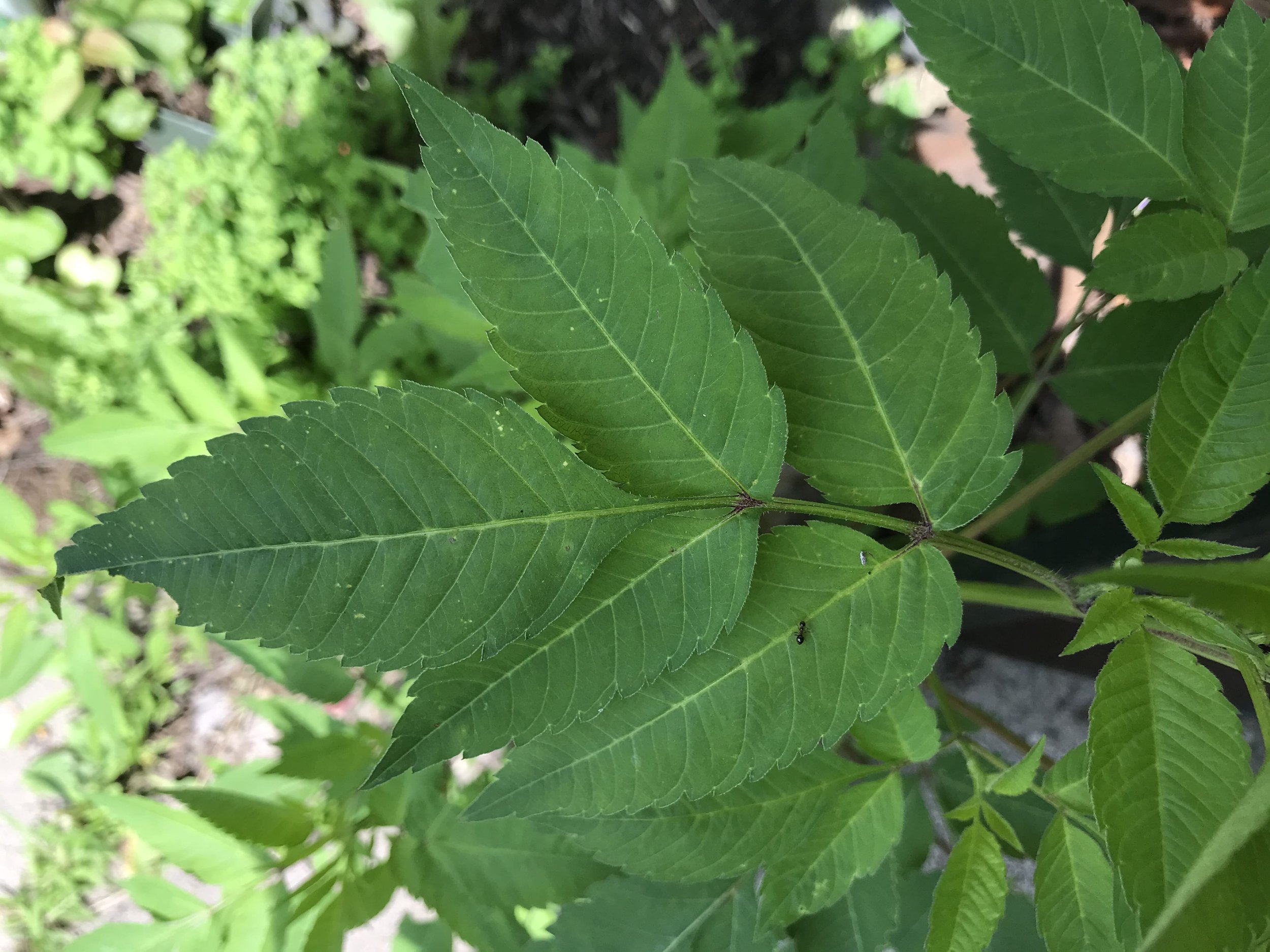
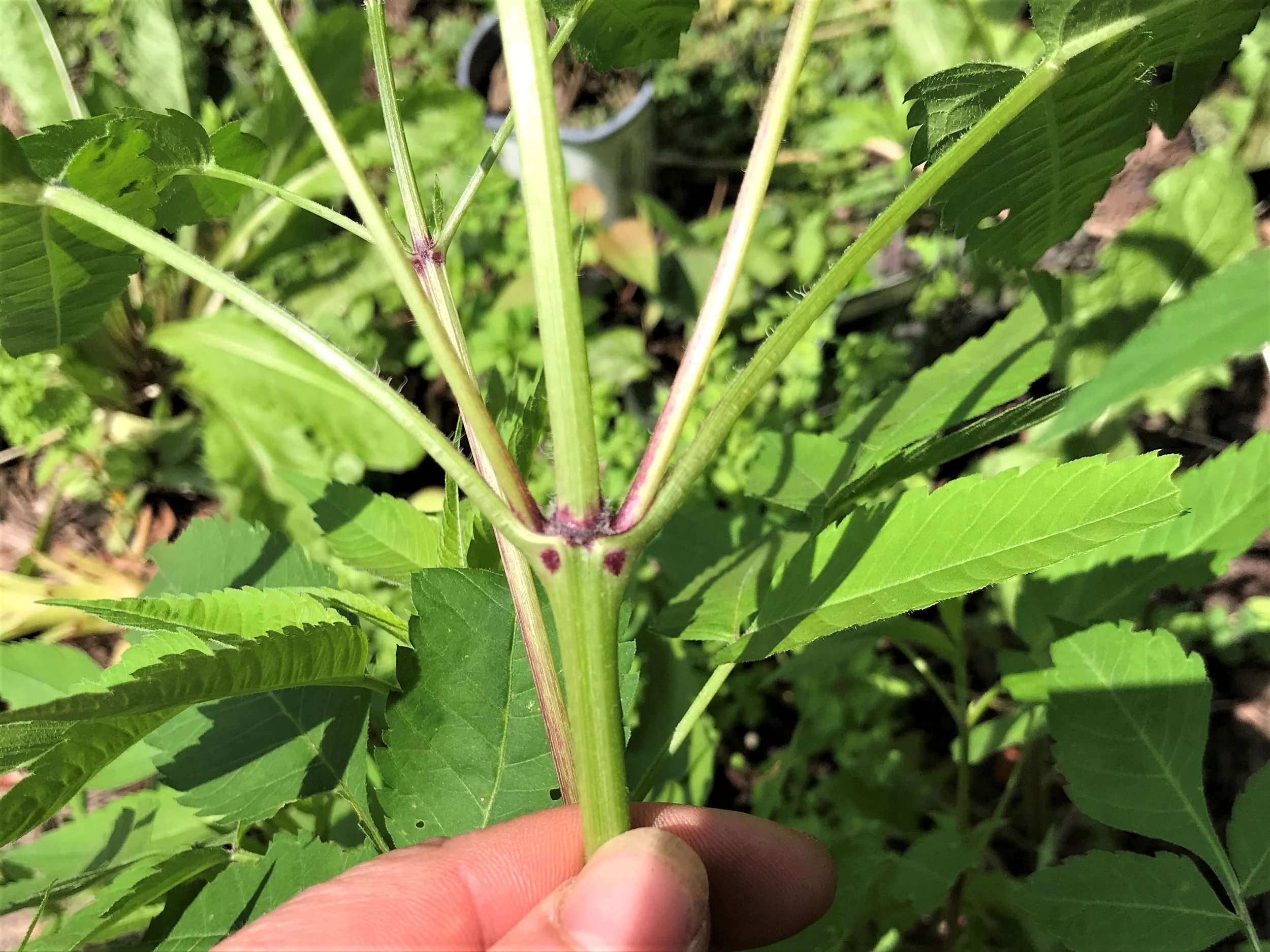
Wild Carrot or Queen Anne’s Lace (Daucus carota) is differentiated from Water Hemlock by the denser flower cluster often with a singular dark purple flower in the middle of the lacy umbel. Also the long hair stem (“Queen’s hairy legs”), and less likely to grow in wetter areas, though I have seen them growing a metre apart separated by the grade of a roadway. I have been with trained naturalists who have confused Water Parsnip (Sium suave) with Water Hemlock as the flowers are similar, but the leaf pattern is different. S. suave leaves are only 1 pinnate, as opposed to the 2 - 3 pinnately compound leaves of the Hemlock, and the leaflets of the S. suave seem clasp the rachis, or central stalk of the leaf. Angelica’s (Angelica spp.) have been confused a little, but the flower structure are much more globe-like, and the leaves much larger. Eastern Hemlock (Tsuga canadensis) can be confused with Water Hemlock in name alone as that species is a tall coniferous tree which is not related to the Water Hemlock. All of the plants listed above are edible, which helps understand why there are folks who poison themselves and others due to mistaken identity.
Bidens or Common Beggar Ticks (Bidens frondosa) looks quite similar to Water Hemlock when not in flower. The leaves are similarly divided, lance shaped, toothed and veined, the stalk can be purple and they often grow in similar wet places. Bidens can be differentiated by the opposite branching of the leaves and when flowering by the yellow disc florets and lacking ray florets common to most other flowers in the Aster family - imagine a Daisy without the petals.
Cicuta maculata can resemble other closely related, similarly toxic plants, which are also called Water Hemlock. These other plants, Bulbiferous Water Hemlock (Cicuta bulbifera), Western Water Hemlock (Cicuta douglasii), Poison Hemlock (Conium maculatum), all have very similar flowers and sometimes even leaf structure, but may differ by root structures, in region they are growing, or some more subtle differences.
Ecosystem Function and Associates
Large bulbous roots stabilize soil, protecting riverbanks from erosion.
As for food for other wildlife, I have heard two accounts of White-tailed Deer (Odocoileus virginiana) browsing on the leaves, though they are widely considered to be poisonous to all mammals. C. maculata is a known host plant for the larvae of the Black Swallowtail Butterfly (Papilio polyxenes), and the caterpillar of a small moth, Epermenia cicutaella, feeds on the flowers and fruits of Water Hemlock. A large number of Wasps come to the flowers for nectar, including (but not limited to) the Anacrabro, Bembix, Gasteruption, Monobia, Sapyga, Stizus, Tachypomilus, and Vespula genera. Numerous pairs of Common Soldier Beetles (Rhagonycha fulva) are commonly found mating atop the flowers of Water Hemlock.
Mating pair of Common Soldier Beetles (Rhagonycha fulva) on Water Hemlock flower head, 2023.07.11
Propagation
Water Hemlock is a perennial which spreads through the roots. I have dug out Water Hemlock before they had gone to seed, only to have them return adjacent to the spot where the plant was the year before. I am unsure of how much of a root needs to remain for the plant to continue to proliferate, but I imagine small portions are enough to continue growth.
Not only does Water Hemlock spread by the roots, but also by the numerous seeds which fall to nearby waterways from the heads in late Autumn, and are often carried downstream to eventually grow somewhere new.
Edible or Medicinal Uses
No edible uses. Do not consume. Violently toxic.
Toxic like how? Well…
A friend, who I would identify as a young (mid 20’s), strong, very healthy, farmer consumed a portion of the root of an unknown plant which later induced sweating, difficulty breathing, seizures, blackout, vomiting. He later identified the plant as Water Hemlock. You can listen to the excerpt of an interview I did with him from March 12, 2018.
I have read that consuming a single portion of the root the width of a finger, can be fatal to an adult. Even though the root is the most toxic part of the plant, the whole plant is toxic. All of it. The toxins can be seen clearly in the root as a yellow oily liquid which is exposed when broken. The more yellowy liquid observed in the root, the more toxins are present.
The yellow goo is a mixture of concentrated unsaturated alcohols, made up of cicutoxin, and cicutol. These polyynes act quickly and directly on the central nervous system. I have most often read of symptoms setting in between 15 - 60 minutes. Again, the symptoms include increased salivation, nausea and vomiting, diarrhea, seizures, widely dilated pupils, fever, low heart rate (bradycardia), severe abdominal pain, low blood pressure, delirium, coma, anoxia, and death is eventually caused by a cardiopulmonary arrest and usually occurs between 1 - 8 hours. Other clinical signs include sweating, chewing movements, slightly bulging eyes, clamping the jaw, strange twitching in the face.
Survival is possible after the ingestion of the Water Hemlock, but help must be sought out quickly and proper treatment administered which usually consists of flushing the body of the materials consumed, and administrating of anti-seizure medications. A complete recovery usually takes several days.
I have said in the past that a few bites of the root could kill a Cow (Bos taurus), and according to some new-to-me research, I think this is untrue. In Toxic Plants of North America (Burrows and Tyrl, 2001) they write that a few bites of the root show clinical symptoms in Cows. While Cows have been recorded as consuming the plant, it would take more than a couple of bites to kill them. One record cited in 1983 records that 10 bull calves died after consuming Water Hemlock in a wet area where they were grazing.
Toxicity appears to be variable by season and geographical location. This makes sense. In the height of Summer, when plants are in flower, most of the plants energy goes into the production of flowers and eventually seed. In the late Fall, as they aerial parts of the plant begin to wither and die back, the roots reabsorb all of the energy and likely chemical constituents of the plants. Burrows and Tyrl also note that Water Hemlock is most toxic in the dormant seasons.
Craft Uses
None that I have come across, although I have heard and read that a number of poisonings of children have occurred due to the use of Water Hemlock for pea shooters.
Additonal Notes
Water Hemlock is an amazing, powerful and valuable teacher. I introduce all of my students to this plant and take the time to cover all of the identifying features and discuss common lookalikes. If we come across an individual Hemlock in an area where they may be frequently encountered by small children, my adult students and I dig up the plant and remove them, while using the chance to look carefully at the roots. This is done in hopes of demystifying the plant and establishing a new relationships of respect, awareness and attention instead of fear. I also wonder as to who else in the world I once may have looked at with fear or anxiety, but could take the time to be in better relationship with?
Many consider Water Hemlock to be a plant which teaches boundaries and limits. We are reminded that not everything is for human consumption or enjoyment.
I am incredibly grateful to have powerful teachers in my life including the Water Hemlock. After studying Water Hemlock for many years now, observing where and how they grow, watching for who they interact with, how they exist in the world, I see a plant which is resilient, reviled and full of lessons we can all learn from.
To learn more :
Botany in a Day by Thomas J. Elpel. Hops Press, 1996.
Newcombs Guide to Wildflowers by Lawrence Newcomb. Little, Brown and Company, 1977.
Ontario Wildflowers by Linda Kershaw. Lone Pine, 2002.
Incredible Wild Edibles by Samuel Thayer. Foragers Harvest, 2017.
The Book of Swamp and Bog by John Eastman. Stackpole Books, 1995.
The North American Guide to Common Poisonous Plants and Mushrooms by Nancy J. Turner and Patrick von Anderkas. Timber Press, 2009.
Toxic Plants of North America by George E. Burrows and Ronald J. Tyrl. Iowa State University Press, 2001.

